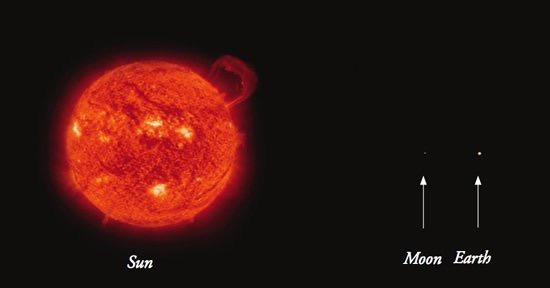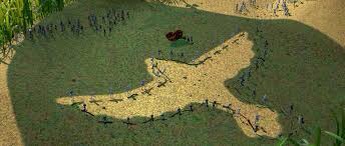How High School Physics Ruined Movies For Me

Suppose a plane that is 100 feet long is flying along the equator at noon on a cloudless day. If the plane is 1000 feet in the air, how big will the plane’s shadow be?
- 10 feet long
- 100 feet long
- 1000 feet long
- Not enough information to answer
I love movies. It’s probably because I’m a writer and a storyteller. Back in the olden-days when you rented not only the VHS tape, but the VHS player as well, I bought a tape of one of my favorite movies before I owned a tape player. It was Butch Cassidy and the Sundance Kid. It was written by William Goldman, who also wrote Princess Bride.
However, there are times I overthink movies. I can typically overlook plot points, or bad dialogue. And let’s face it, movies are about pretending. I’m always amused when my kids will criticize a movie by saying something like,
There’s no way that Simba would have been able to survive on just bugs. He could never have gotten enough protein to sustain a full grown lion.
So. . . .you’re okay with the premise of talking animals but you’ve got a problem with a lion eating grubs?
However, I have to admit that I do it too. Just on different items.
The sun is really big. I mean REALLY big. Think of the biggest thing you’ve ever seen on earth. The sun is WAY bigger than that. In fact, the sun is way bigger than the earth. It only looks reasonable sized in the sky because it is 93 million miles away.

(Photo Credit: Answers In Genesis)
I learned about the size of the sun in high school physics. And I can’t forget about it while I am watching movies. Pixar is one of the most successful movie studios ever. Their record string of successful movies without a bomb will probably never be matched. They combine wonderful animation with interesting storytelling. Bug’s Life was no exception. I loved it as a kid and my kids love it now. There’s just one scene that really bugs me.
Remember when they have to build the bird? They cut a bird shape out of a leaf and then fly the leaf high up in the air to get the shadow to expand to the size of their “bird/plane.” Yeah, I hate that scene. It’s terrible science.

I think we’ve all pictured ourselves as the main character in a reality show at one point. Before we had actual reality shows, we had The Truman Show. Jim Cary gives a remarkably understated performance as a man unwittingly staring in his own reality show. At a key point, he starts to figure it out and he attempts to escape in the middle of the night. Ed Harris, the show’s director has to make a tough decision as the crew searches for Truman on their mammoth artificial sound stage.
Cue the sun.
And we find out that the sun that Truman has spent his whole life looking at is simply one more prop in their elaborate TV set. Yeah, I hate that scene too.
If I hadn’t paid attention in physics, I would be able to enjoy them without issue. But, remember how I said the sun is REALLY big. Like bigger than the earth big? That affects how the sunlight gets to earth. If you turn on a light bulb, the closer you get to the light bulb, the bigger your shadow becomes, until you eventually block out all light if you get close enough. That’s because a light bulb is a point source of light. The light rays come off in an ever expanding circle, like ripples in a pond when you toss in a rock.
The sun isn’t like that. The sun is so huge that the light rays reach the earth essentially parallel to each other. Sunlight is kind of like a great big wall of light. If you walk up to a wall of light, you will never be able to block it out. It’s too big. That’s the sun. It also means your shadow will be the same size no matter how close or far away you are from the wall of light.
Okay, so what’s this have to do with Bug’s Life and The Truman Show? In Bug’s Life, the leaf that they use for a template would only get bigger if the sun where a point of light. Like if the sun were a spot light 100′ above Ant Island, instead of a massive wall of light 93 million miles away. The same thing with the Truman Show. It’s impossible to simulate the sun effectively on a sound stage. The shadows would be all wrong.
What’s this have to do with computers, or IT or leadership?
There are times when we need to suspend our disbelief. We need to put aside what we KNOW to be true and accept what we WANT to be true. Microsoft has asked us to do it for years when they would announce some new “amazing” new product. . .scheduled to come out “later.” We don’t need to buy into that hype, but as a manager, there will be times where you need to believe in your team. You might know that they are not currently capable of accomplishing a challenging goal. But, if you ever want them to exceed their limits you need to get really good at suspending your disbelief and convincing yourself and your team that they can reach new heights.
Maybe even the distance from the earth to the sun.
And in case, you are still curious about the question I posed at the beginning; regardless of how high the airplane is flying, the shadow would be 100′ long. The exact same size as the airplane.
Rodney M Bliss is an author, columnist and IT Consultant. His blog updates every weekday at 7:00 AM Mountain Time. He lives in Pleasant Grove, UT with his lovely wife, thirteen children and grandchildren.
Follow him on
Twitter (@rodneymbliss)
Facebook (www.facebook.com/rbliss)
LinkedIn (www.LinkedIn.com/in/rbliss)
or email him at rbliss at msn dot com(c) 2015 Rodney M Bliss, all rights reserved

Good analysis, but there is an additional factor. The sun is not a point source and there will be an area of total occlusion (umbra) and a larger area of partial occlusion (penumbra). Due to the geometry of a non point source the penumbra will be larger than 100 feet while the umbra will be smaller. At a high enough altitude the umbra will disappear completely, as it goes even higher it the penumbra fades until it becomes indistinguishable from normal sunlight.
You can see this effect best on smaller, closer objects. Look at the shadow cast by power lines (if you still have them nearby) and compare with the darker shadow cast by the poles. Then examine the shadow of the pole, sharp and crisp near the base, losing definition of the edges as you look further from the base.